According to Ireland’s Climate Action Plan 2023 (rather confusingly sometimes called CAP23) agriculture accounted for 33.33% of the country’s greenhouse gas emissions in 2021.
Overall emissions from the sector have increased by 19% over the past 10 years. With 2022 not expected to show much improvement, there is a lot of work to do before the end of the decade to achieve the reduction required from Ireland’s agriculture industry.
Among the many changes the Climate Action Plan calls for from the agricultural sector, the following measures which aim to encourage and support farmers’ transition to alternatives to intensive livestock farming will directly lead to land use changes in Ireland.
By 2025:
Increasing the level of organic farming to 250,000ha.Expanding the indigenous biomethane sector through anaerobic digestion, reaching up 1TWh of biomethane.Increasing the area of tillage to 360,000ha.Contributing to the delivery of the land use, land use change and forestry (LULUCF) targets for afforestation and reduced management intensity of organic soils.By 2030:
Incentivising an increase in the level of organic farming to 450,000ha.Expanding the indigenous biomethane sector through anaerobic digestion, reaching up 5.7TWh of biomethane.Supporting an increase in the area of tillage to 400,000ha.Contributing to the delivery of the LULUCF targets for afforestation and reduced management intensity of organic soils.The LULUCF ambitions for soils include:
Improve our management for carbon sequestration of 200,000ha of grasslands on mineral soils.Reduce the management intensity of grasslands on 25,000ha of drained organic soil.Rehabilitate 33,000ha of peatlands as part of the Bord na Móna enhanced decommissioning.The actual targets by 2025 are:
25,000ha of cover crop planted.35,000ha of cereal area to incorporate straw directly into soil.200,000ha of mineral grassland managed to improve sequestration. 25,000ha of drained organic soils with reduced management intensity.33,000ha of peatlands rehabilitated.And by 2030:
50,000ha of cover crop planted. 55,000ha of cereal area to incorporate straw directly into soil.450,000ha of mineral grassland managed to improve sequestration. 80,000ha of drained organic soils with reduced management intensity.35,900ha of peatlands rehabilitated.41,700ha of additional peatlands to be funded and rehabilitated.Finally, on the forestry side, the afforestation target is to have an extra 8,000ha planted every year until 2030. That breaks down as 28,000ha by 2025 and 68,000ha by 2030.
The annual afforestation programme for the new forestry scheme (2023-2027) is 8,000ha compared with 2,000 ha planted per year at present. Interestingly, the previous forestry programme which ran from 2014 to 2020 (and was then extended to 2022) also had an 8,000ha per annum target. It failed to meet that target in every one of the years the programme was in place.
Of the targeted 72,000ha over the nine years of that plan only 38,500ha were planting – barely more than 50%.
The goals for agriculture and land use changes are certainly ambitious. As we can see in forestry, Ireland has set ambitious targets before and completely failed to meet them.
However, as is often said in business, “past performance is not an indicator of future results” so over the following pages we will look at how agriculture is ready to face these demands, on top of all the other challenges the industry faces.
Whatever changes are to come for land use will have to be implemented by the custodians of that land – Irish farmers. With that in mind, we asked the Irish Farmers Journal’s in-house experts about the challenges facing their sectors right now, and what the longer-term outlook looks like
“In the immediate term, grain price is the biggest issue facing tillage farmers. The majority of fertiliser was bought at the top of this season’s market, while pesticide costs are also up. In the meantime, grain prices are coming back down to below €200/t. With a delayed spring planting season and delayed fertiliser and pesticide applications on winter crops, yields do not look set to be records, so an income crisis looks to be on the horizon.
Access to land is a big issue
The challenge for the sector as a whole will be to meet the Government’s target set out in the Climate Action Plan to increase the tillage area to 400,000ha by 2030, an increase of approximately 48,000ha on 2022.
Access to land is a big issue. Tillage farmers cannot compete in the land market as dairy farmers try to increase their land area to maintain stock numbers under new nitrates rules. Solar farms are also competing in some parts of the country.
Amidst the challenges are positives. Specialist tillage farms emit just 1.18t of carbon dioxide equivalents per hectare. Tillage also has huge potential to store carbon as carbon stocks are generally low in tillage soils. However, the sector also has the methods to do it through cover cropping and straw incorporation.
While the livestock sector will always need animal feed Irish tillage farmers need premium markets to supply their grain to in order to maximise their income.
Malting barley and gluten-free oats are playing a part here, but knowing the carbon footprint of grain and in turn feed could help to produce a branded carton of milk or cut of beef with a low carbon footprint printed on the packet and the supply chain should benefit as a result.”
“Of all the regulatory issues facing farming, the changes to the nitrates derogation are the most pressing. Reducing the upper limit in the derogation from 250kg to 220kg as is planned for later this year will have catastrophic impacts on some dairy farms while doing little to improve water quality.
That is by far not the only challenge facing the sector with milk prices now falling faster than costs.
Farmers will have to be reenergised to cut costs – tactics that they haven’t really had to resort to since the last time margin was squeezed which was in 2016. This will be a big challenge for those with higher-input systems where costs tend to be sticky.
With near full employment across the economy, sourcing people to work on farms or to do anything with their hands is a big challenge too.
We have seen in recent months that Government support for dairy farmers is in short supply
The problem is particularly acute on dairy farms, which have a reputation for long working days and unsociable hours. These are problems replicated across the world and while it is a challenge for the industry, it’s also an opportunity for those who are good at attracting people to grow their business.
Further, we have seen in recent months that Government support for dairy farmers is in short supply. It seems there is no political will to support the sector, with severe restrictions on dairy farmers applying for TAMS and dairy farmers locked out of accessing other schemes and supports.”
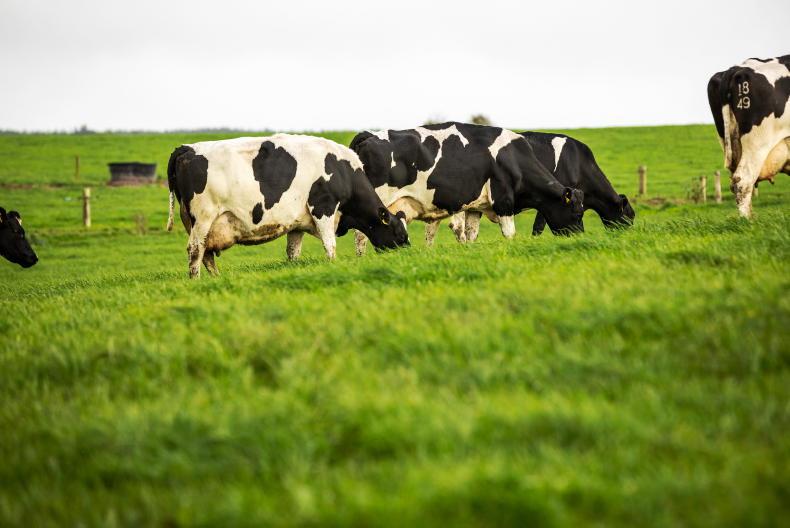
The introduction of banding this year means some dairy operations are under even more pressure.
It’s been a sluggish start to the 2023 beef trade with expectations of prices hitting the highs of 2022 now faded.
The forecasted drop in numbers hasn’t been enough to tip the supply and demand curve with factories managing the estimated drop of 60,000 to 80,000 head of cattle to avoid any peaks and troughs in their supply chains over the next few months.
Weather, as is often the case in Irish farming, has played a role, with a tricky March leaving cattle indoors to be finished rather than turned out to grass. This has left numbers pretty steady for the first five months but should bode well for a tightness in supplies later in the year.
The UK market, Ireland’s main destination for beef, has been performing really well with R3 steers coming into the equivalent of €6.04/kg at the end of May. This compares to the average R3 steer price of €5.50/kg in Ireland for the same week.
The European beef market has been under a little more pressure with prices coming back in Germany and Italy over the last few weeks
Winter finishers have been the real losers so far in 2023 with a more positive outlook for grass finishers later in the year.
Further afield, the European beef market has been under a little more pressure with prices coming back in Germany and Italy over the last few weeks.
This is being put down to the cost of living squeeze with consumers trading down in cut values but maintaining spend.
Manufacturing beef sales have been very strong with the summer months normally peaking for burger sales. European beef production is expected to decline by 1.6% in 2023. This will be counteracted by a decline in consumption and an increase in imports from outside Europe.
Trade deal
The Mercosur trade deal is the big cloud on the horizon with the trade deal expected to be ratified later in 2023.
This will open up the European beef market to Mercosur countries for 99,000 tonnes of tariff-free beef. It remains to be seen how much of that they will fill or what type of cuts they will send to Europe.
There is a fear that if it’s high-priced steak cuts like fillets and striploins, it could decimate the EU steak market and put real pressure on Irish beef prices. Brazil is currently concentrating on the Chinese market but this could all change in the future.
The latest Department of Agriculture sheep census results show the national breeding ewe flock falling by 35,877 ewes, or 1.3%, to 2.66m ewes.
The reduction in numbers was probably lower than anticipated, with escalating costs denting producer confidence. It was the first time in several years that numbers reduced in sheep strongholds along the western coast, with hill sheep enterprises particularly affected in 2022 by lower prices for store lambs and higher costs.
The reduction in sheep numbers over the last decade in the east of the country had steadied in the last couple of years but ramped up again with ewe numbers falling by 2% to 5% in dairy strongholds.
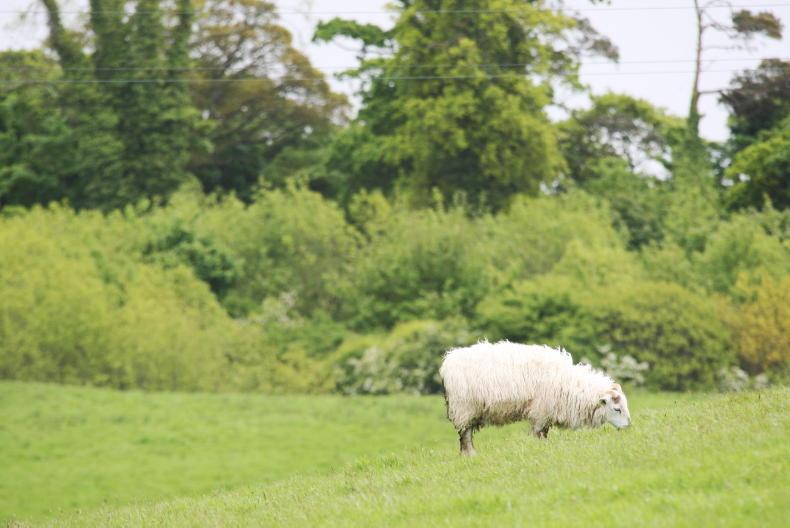
The drop in returns and a sharp increase in demand, driven by dairy farmers availing of a nitrates derogation looking to protect their farms from proposed stocking rate reductions, has certainly had an effect.
The policy change will continue to put pressure on sheep numbers here until there is more clarity on if Ireland can reverse the decision to reduce the stocking rate limit.
There are a number of other policy changes that have already been introduced or are on the horizon that could also influence numbers.
There are fears in more marginal land-type areas, in particular, that the nature restoration law will limit the production potential of farmers on such lands.
The Department has said any legislation will be voluntary but many unknowns still exist.
BREXIT
The consequences of Brexit for the sheep sector are starting to materialise, with Britain’s free-trade agreement with Australia having the potential to change trade dynamics in Europe.
Indeed, the impending EU-Australia trade deals are also rightly of concern.
A reduction in input costs and stable market returns would certainly help to restore confidence in the sheep sector, while a show of support from the Department would also help. Sheep farmers feel short-changed that the level of funding available under CAP was cut and maintained for other sectors. An increase in the level of support would certainly go a long way towards inserting some much-needed optimism into the sector.
As Aidan Brennan mentioned in his notes, the nitrates issue is going to be a huge one for Irish agriculture this year.
Ireland has a derogation which allows farmers to run stocking rates up to 250kg livestock manure nitrogen per hectare. This is far above the 170kg nitrogen/hectare limit across much of the European Union. Ireland has its derogation on the basis that there is no worsening of water quality in the country.
While the derogation runs until 2025, there is additional conditionalities involved, meaning that an interim water quality review is being conducted. That review is being finalised, with the results expected in September this year.
Where the review identifies polluted waters or where there are worsening trends in water quality, the maximum stocking rate on farms in the catchment area must be reduced from 250kg/ha to a maximum of 220 kg/ha from 2024.
Ted Massey, inspector in the nitrates and biodiversity division in the Department of Agriculture, Food and the Marine recently told a Teagasc webinar on the issue that there is a risk that some, or even all, of Ireland would be forced to a maximum stocking rate of 220kg/ha.
For dairy farmers, there are two ways of reacting to a reduction in the derogation were it to come in.
Assuming a dairy cow is at 89kg nitrogen, we see that a farmer with 30ha can have a maximum of 85 cows at 250kg/ha. This drops back to 75 cows under 220kg/ha and all the way down to 57 cows on 170kg/ha.
Alternatively, the farmer with 85 cows on 30ha will need to increase their holding to just over 34ha at 220kg/ha and all the way up to 44.5ha at 170ha/kg.
These numbers are provided for illustrative purposes. The introduction of banding this year means some dairy operations are under even more pressure.
Also, the lower the limit, the more dairy farmers will be caught having to make a choice between cow numbers and land area.
While that choice will be up to each farmer, the assumption – and evidence so far – is that there are some cutbacks in herd numbers and some scramble for land.
The number of dairy cows had its smallest expansion since the end of quotas in 2022, while milk production barely rose. High prices likely motivated farmers not to reduce herd sizes. With banding already increasing the demand for land, and the possible drop to 220kg from next year, dairy farmers are pushing prices for leased land to record highs.
This squeeze from the dairy sector on the supply of rental land is, as Irish Farmers Journal tillage editor Siobhán Walsh has pointed out, a major risk to the tillage sector’s goals.
With a significant amount of tillage land being leased, the competition from dairy farmers at renewal time means that tillage farmers are pulling back.
This year, 2023, will likely see a 2% or 8,0000ha reduction in the amount of land planted in the country. That is a significant step in the wrong direction from the Climate Action Plan’s demand for an 8,000 per year increase between 2022 and 2030.
Between nitrates rules, Climate Action Plan ambitions and the outlook for the Common Agricultural Policy there is probably enough legislative pressure on the Irish landscape, and the supply of land for commercial farming.
However, there is one more arrow to be fired – the EU’s proposed Nature Restoration Law.
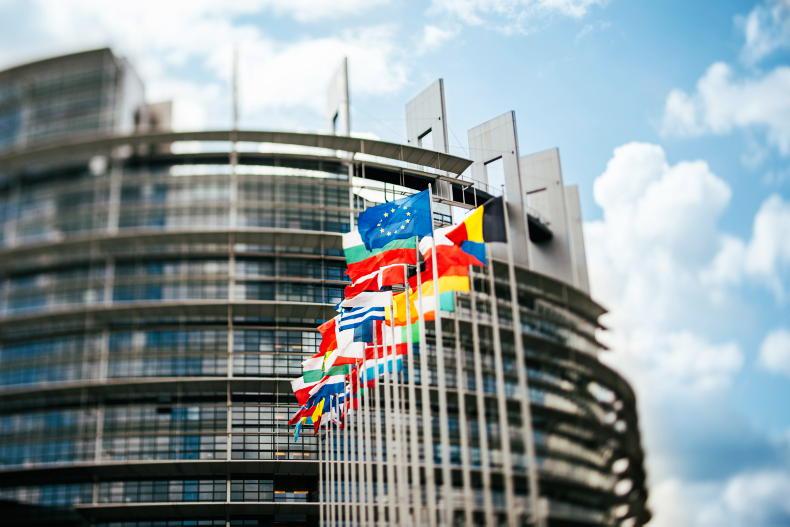
The European Parliament.
Right now, that law is still a proposal, with votes happening in European Parliament committees as we write this. As it stands, the rewetting part of the proposal will by far be the most difficult for Ireland to adhere to.
Ireland has an estimated 330,000ha of drained, farmed peatland. The rewetting proposals could see 30% of that restored by 2030, with half of that amount rewet. This implies 100,000ha of land lost to intensive agriculture, and half of that entirely lost to traditional agricultural practices.
Right now, European politicians are split on the measure, with Green MEPs pushing for even more ambitious targets while agricultural and rural MEPs are trying to – excuse the pun – water down the proposal.
It is not an overstatement to say that the next six months could be the most significant ever for land use in Ireland.
The nitrates decision in September will be key to deciding the near future of dairy, which in turn with decide whether or not tillage has any hope of meeting the Climate Action Plan’s targets.
The new forestry programme is finally ready to go, but the uptake will be key.
A total of 8,000ha a year hasn’t been reached in a very long time, and almost certainly won’t be hit in 2023. But a strong start might give some hope that the target could be hit in 2024.
Finally, the Nature Restoration Law will either be agreed or rejected. If there is an agreement, the details will be critical for Ireland as it may push further land out of agricultural use, further increasing competition for what’s left.
Speaking of competition, there are also uses for land that have nothing to do with farming at all – the last few years have seen huge increases in demand for land for solar projects and we may start to see anaerobic digesters eating their way into Ireland’s food-production capacity too.
According to Ireland’s Climate Action Plan 2023 (rather confusingly sometimes called CAP23) agriculture accounted for 33.33% of the country’s greenhouse gas emissions in 2021.
Overall emissions from the sector have increased by 19% over the past 10 years. With 2022 not expected to show much improvement, there is a lot of work to do before the end of the decade to achieve the reduction required from Ireland’s agriculture industry.
Among the many changes the Climate Action Plan calls for from the agricultural sector, the following measures which aim to encourage and support farmers’ transition to alternatives to intensive livestock farming will directly lead to land use changes in Ireland.
By 2025:
Increasing the level of organic farming to 250,000ha.Expanding the indigenous biomethane sector through anaerobic digestion, reaching up 1TWh of biomethane.Increasing the area of tillage to 360,000ha.Contributing to the delivery of the land use, land use change and forestry (LULUCF) targets for afforestation and reduced management intensity of organic soils.By 2030:
Incentivising an increase in the level of organic farming to 450,000ha.Expanding the indigenous biomethane sector through anaerobic digestion, reaching up 5.7TWh of biomethane.Supporting an increase in the area of tillage to 400,000ha.Contributing to the delivery of the LULUCF targets for afforestation and reduced management intensity of organic soils.The LULUCF ambitions for soils include:
Improve our management for carbon sequestration of 200,000ha of grasslands on mineral soils.Reduce the management intensity of grasslands on 25,000ha of drained organic soil.Rehabilitate 33,000ha of peatlands as part of the Bord na Móna enhanced decommissioning.The actual targets by 2025 are:
25,000ha of cover crop planted.35,000ha of cereal area to incorporate straw directly into soil.200,000ha of mineral grassland managed to improve sequestration. 25,000ha of drained organic soils with reduced management intensity.33,000ha of peatlands rehabilitated.And by 2030:
50,000ha of cover crop planted. 55,000ha of cereal area to incorporate straw directly into soil.450,000ha of mineral grassland managed to improve sequestration. 80,000ha of drained organic soils with reduced management intensity.35,900ha of peatlands rehabilitated.41,700ha of additional peatlands to be funded and rehabilitated.Finally, on the forestry side, the afforestation target is to have an extra 8,000ha planted every year until 2030. That breaks down as 28,000ha by 2025 and 68,000ha by 2030.
The annual afforestation programme for the new forestry scheme (2023-2027) is 8,000ha compared with 2,000 ha planted per year at present. Interestingly, the previous forestry programme which ran from 2014 to 2020 (and was then extended to 2022) also had an 8,000ha per annum target. It failed to meet that target in every one of the years the programme was in place.
Of the targeted 72,000ha over the nine years of that plan only 38,500ha were planting – barely more than 50%.
The goals for agriculture and land use changes are certainly ambitious. As we can see in forestry, Ireland has set ambitious targets before and completely failed to meet them.
However, as is often said in business, “past performance is not an indicator of future results” so over the following pages we will look at how agriculture is ready to face these demands, on top of all the other challenges the industry faces.
Whatever changes are to come for land use will have to be implemented by the custodians of that land – Irish farmers. With that in mind, we asked the Irish Farmers Journal’s in-house experts about the challenges facing their sectors right now, and what the longer-term outlook looks like
“In the immediate term, grain price is the biggest issue facing tillage farmers. The majority of fertiliser was bought at the top of this season’s market, while pesticide costs are also up. In the meantime, grain prices are coming back down to below €200/t. With a delayed spring planting season and delayed fertiliser and pesticide applications on winter crops, yields do not look set to be records, so an income crisis looks to be on the horizon.
Access to land is a big issue
The challenge for the sector as a whole will be to meet the Government’s target set out in the Climate Action Plan to increase the tillage area to 400,000ha by 2030, an increase of approximately 48,000ha on 2022.
Access to land is a big issue. Tillage farmers cannot compete in the land market as dairy farmers try to increase their land area to maintain stock numbers under new nitrates rules. Solar farms are also competing in some parts of the country.
Amidst the challenges are positives. Specialist tillage farms emit just 1.18t of carbon dioxide equivalents per hectare. Tillage also has huge potential to store carbon as carbon stocks are generally low in tillage soils. However, the sector also has the methods to do it through cover cropping and straw incorporation.
While the livestock sector will always need animal feed Irish tillage farmers need premium markets to supply their grain to in order to maximise their income.
Malting barley and gluten-free oats are playing a part here, but knowing the carbon footprint of grain and in turn feed could help to produce a branded carton of milk or cut of beef with a low carbon footprint printed on the packet and the supply chain should benefit as a result.”
“Of all the regulatory issues facing farming, the changes to the nitrates derogation are the most pressing. Reducing the upper limit in the derogation from 250kg to 220kg as is planned for later this year will have catastrophic impacts on some dairy farms while doing little to improve water quality.
That is by far not the only challenge facing the sector with milk prices now falling faster than costs.
Farmers will have to be reenergised to cut costs – tactics that they haven’t really had to resort to since the last time margin was squeezed which was in 2016. This will be a big challenge for those with higher-input systems where costs tend to be sticky.
With near full employment across the economy, sourcing people to work on farms or to do anything with their hands is a big challenge too.
We have seen in recent months that Government support for dairy farmers is in short supply
The problem is particularly acute on dairy farms, which have a reputation for long working days and unsociable hours. These are problems replicated across the world and while it is a challenge for the industry, it’s also an opportunity for those who are good at attracting people to grow their business.
Further, we have seen in recent months that Government support for dairy farmers is in short supply. It seems there is no political will to support the sector, with severe restrictions on dairy farmers applying for TAMS and dairy farmers locked out of accessing other schemes and supports.”

The introduction of banding this year means some dairy operations are under even more pressure.
It’s been a sluggish start to the 2023 beef trade with expectations of prices hitting the highs of 2022 now faded.
The forecasted drop in numbers hasn’t been enough to tip the supply and demand curve with factories managing the estimated drop of 60,000 to 80,000 head of cattle to avoid any peaks and troughs in their supply chains over the next few months.
Weather, as is often the case in Irish farming, has played a role, with a tricky March leaving cattle indoors to be finished rather than turned out to grass. This has left numbers pretty steady for the first five months but should bode well for a tightness in supplies later in the year.
The UK market, Ireland’s main destination for beef, has been performing really well with R3 steers coming into the equivalent of €6.04/kg at the end of May. This compares to the average R3 steer price of €5.50/kg in Ireland for the same week.
The European beef market has been under a little more pressure with prices coming back in Germany and Italy over the last few weeks
Winter finishers have been the real losers so far in 2023 with a more positive outlook for grass finishers later in the year.
Further afield, the European beef market has been under a little more pressure with prices coming back in Germany and Italy over the last few weeks.
This is being put down to the cost of living squeeze with consumers trading down in cut values but maintaining spend.
Manufacturing beef sales have been very strong with the summer months normally peaking for burger sales. European beef production is expected to decline by 1.6% in 2023. This will be counteracted by a decline in consumption and an increase in imports from outside Europe.
Trade deal
The Mercosur trade deal is the big cloud on the horizon with the trade deal expected to be ratified later in 2023.
This will open up the European beef market to Mercosur countries for 99,000 tonnes of tariff-free beef. It remains to be seen how much of that they will fill or what type of cuts they will send to Europe.
There is a fear that if it’s high-priced steak cuts like fillets and striploins, it could decimate the EU steak market and put real pressure on Irish beef prices. Brazil is currently concentrating on the Chinese market but this could all change in the future.
The latest Department of Agriculture sheep census results show the national breeding ewe flock falling by 35,877 ewes, or 1.3%, to 2.66m ewes.
The reduction in numbers was probably lower than anticipated, with escalating costs denting producer confidence. It was the first time in several years that numbers reduced in sheep strongholds along the western coast, with hill sheep enterprises particularly affected in 2022 by lower prices for store lambs and higher costs.
The reduction in sheep numbers over the last decade in the east of the country had steadied in the last couple of years but ramped up again with ewe numbers falling by 2% to 5% in dairy strongholds.

The drop in returns and a sharp increase in demand, driven by dairy farmers availing of a nitrates derogation looking to protect their farms from proposed stocking rate reductions, has certainly had an effect.
The policy change will continue to put pressure on sheep numbers here until there is more clarity on if Ireland can reverse the decision to reduce the stocking rate limit.
There are a number of other policy changes that have already been introduced or are on the horizon that could also influence numbers.
There are fears in more marginal land-type areas, in particular, that the nature restoration law will limit the production potential of farmers on such lands.
The Department has said any legislation will be voluntary but many unknowns still exist.
BREXIT
The consequences of Brexit for the sheep sector are starting to materialise, with Britain’s free-trade agreement with Australia having the potential to change trade dynamics in Europe.
Indeed, the impending EU-Australia trade deals are also rightly of concern.
A reduction in input costs and stable market returns would certainly help to restore confidence in the sheep sector, while a show of support from the Department would also help. Sheep farmers feel short-changed that the level of funding available under CAP was cut and maintained for other sectors. An increase in the level of support would certainly go a long way towards inserting some much-needed optimism into the sector.
As Aidan Brennan mentioned in his notes, the nitrates issue is going to be a huge one for Irish agriculture this year.
Ireland has a derogation which allows farmers to run stocking rates up to 250kg livestock manure nitrogen per hectare. This is far above the 170kg nitrogen/hectare limit across much of the European Union. Ireland has its derogation on the basis that there is no worsening of water quality in the country.
While the derogation runs until 2025, there is additional conditionalities involved, meaning that an interim water quality review is being conducted. That review is being finalised, with the results expected in September this year.
Where the review identifies polluted waters or where there are worsening trends in water quality, the maximum stocking rate on farms in the catchment area must be reduced from 250kg/ha to a maximum of 220 kg/ha from 2024.
Ted Massey, inspector in the nitrates and biodiversity division in the Department of Agriculture, Food and the Marine recently told a Teagasc webinar on the issue that there is a risk that some, or even all, of Ireland would be forced to a maximum stocking rate of 220kg/ha.
For dairy farmers, there are two ways of reacting to a reduction in the derogation were it to come in.
Assuming a dairy cow is at 89kg nitrogen, we see that a farmer with 30ha can have a maximum of 85 cows at 250kg/ha. This drops back to 75 cows under 220kg/ha and all the way down to 57 cows on 170kg/ha.
Alternatively, the farmer with 85 cows on 30ha will need to increase their holding to just over 34ha at 220kg/ha and all the way up to 44.5ha at 170ha/kg.
These numbers are provided for illustrative purposes. The introduction of banding this year means some dairy operations are under even more pressure.
Also, the lower the limit, the more dairy farmers will be caught having to make a choice between cow numbers and land area.
While that choice will be up to each farmer, the assumption – and evidence so far – is that there are some cutbacks in herd numbers and some scramble for land.
The number of dairy cows had its smallest expansion since the end of quotas in 2022, while milk production barely rose. High prices likely motivated farmers not to reduce herd sizes. With banding already increasing the demand for land, and the possible drop to 220kg from next year, dairy farmers are pushing prices for leased land to record highs.
This squeeze from the dairy sector on the supply of rental land is, as Irish Farmers Journal tillage editor Siobhán Walsh has pointed out, a major risk to the tillage sector’s goals.
With a significant amount of tillage land being leased, the competition from dairy farmers at renewal time means that tillage farmers are pulling back.
This year, 2023, will likely see a 2% or 8,0000ha reduction in the amount of land planted in the country. That is a significant step in the wrong direction from the Climate Action Plan’s demand for an 8,000 per year increase between 2022 and 2030.
Between nitrates rules, Climate Action Plan ambitions and the outlook for the Common Agricultural Policy there is probably enough legislative pressure on the Irish landscape, and the supply of land for commercial farming.
However, there is one more arrow to be fired – the EU’s proposed Nature Restoration Law.

The European Parliament.
Right now, that law is still a proposal, with votes happening in European Parliament committees as we write this. As it stands, the rewetting part of the proposal will by far be the most difficult for Ireland to adhere to.
Ireland has an estimated 330,000ha of drained, farmed peatland. The rewetting proposals could see 30% of that restored by 2030, with half of that amount rewet. This implies 100,000ha of land lost to intensive agriculture, and half of that entirely lost to traditional agricultural practices.
Right now, European politicians are split on the measure, with Green MEPs pushing for even more ambitious targets while agricultural and rural MEPs are trying to – excuse the pun – water down the proposal.
It is not an overstatement to say that the next six months could be the most significant ever for land use in Ireland.
The nitrates decision in September will be key to deciding the near future of dairy, which in turn with decide whether or not tillage has any hope of meeting the Climate Action Plan’s targets.
The new forestry programme is finally ready to go, but the uptake will be key.
A total of 8,000ha a year hasn’t been reached in a very long time, and almost certainly won’t be hit in 2023. But a strong start might give some hope that the target could be hit in 2024.
Finally, the Nature Restoration Law will either be agreed or rejected. If there is an agreement, the details will be critical for Ireland as it may push further land out of agricultural use, further increasing competition for what’s left.
Speaking of competition, there are also uses for land that have nothing to do with farming at all – the last few years have seen huge increases in demand for land for solar projects and we may start to see anaerobic digesters eating their way into Ireland’s food-production capacity too.








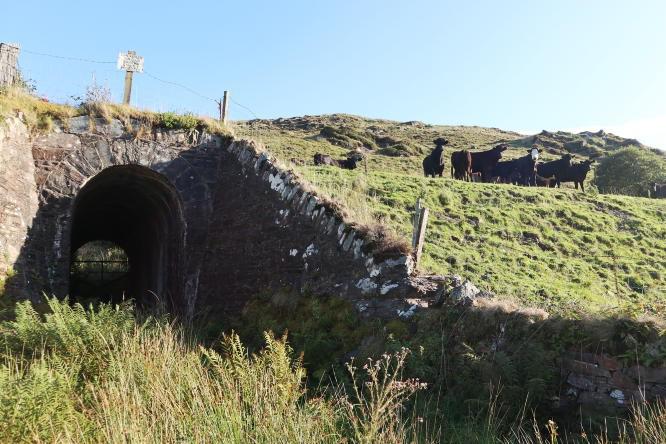
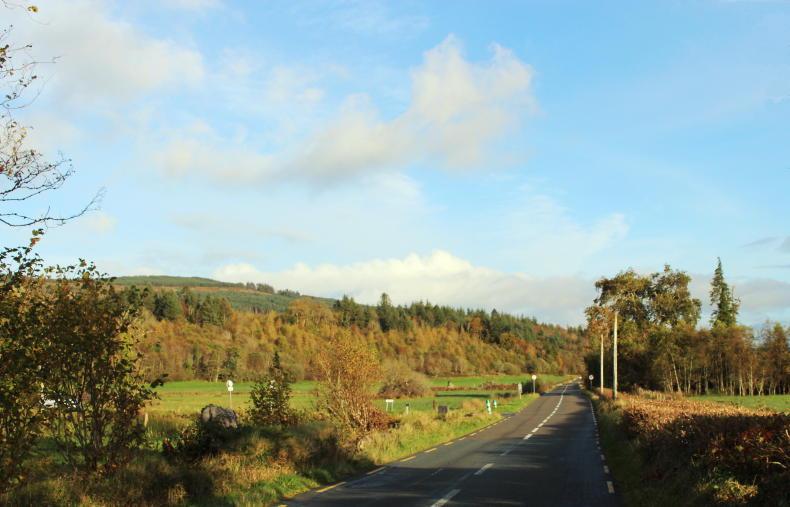
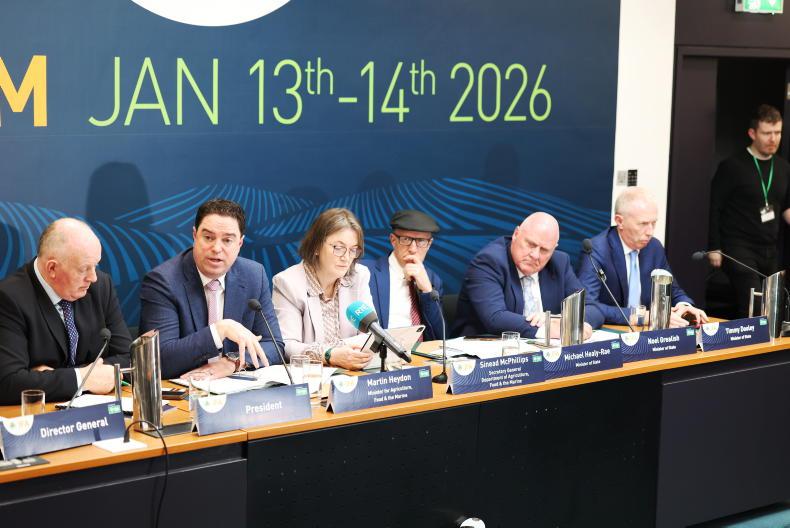

SHARING OPTIONS